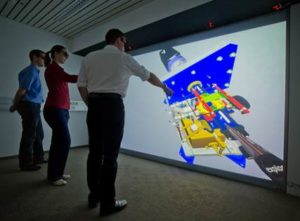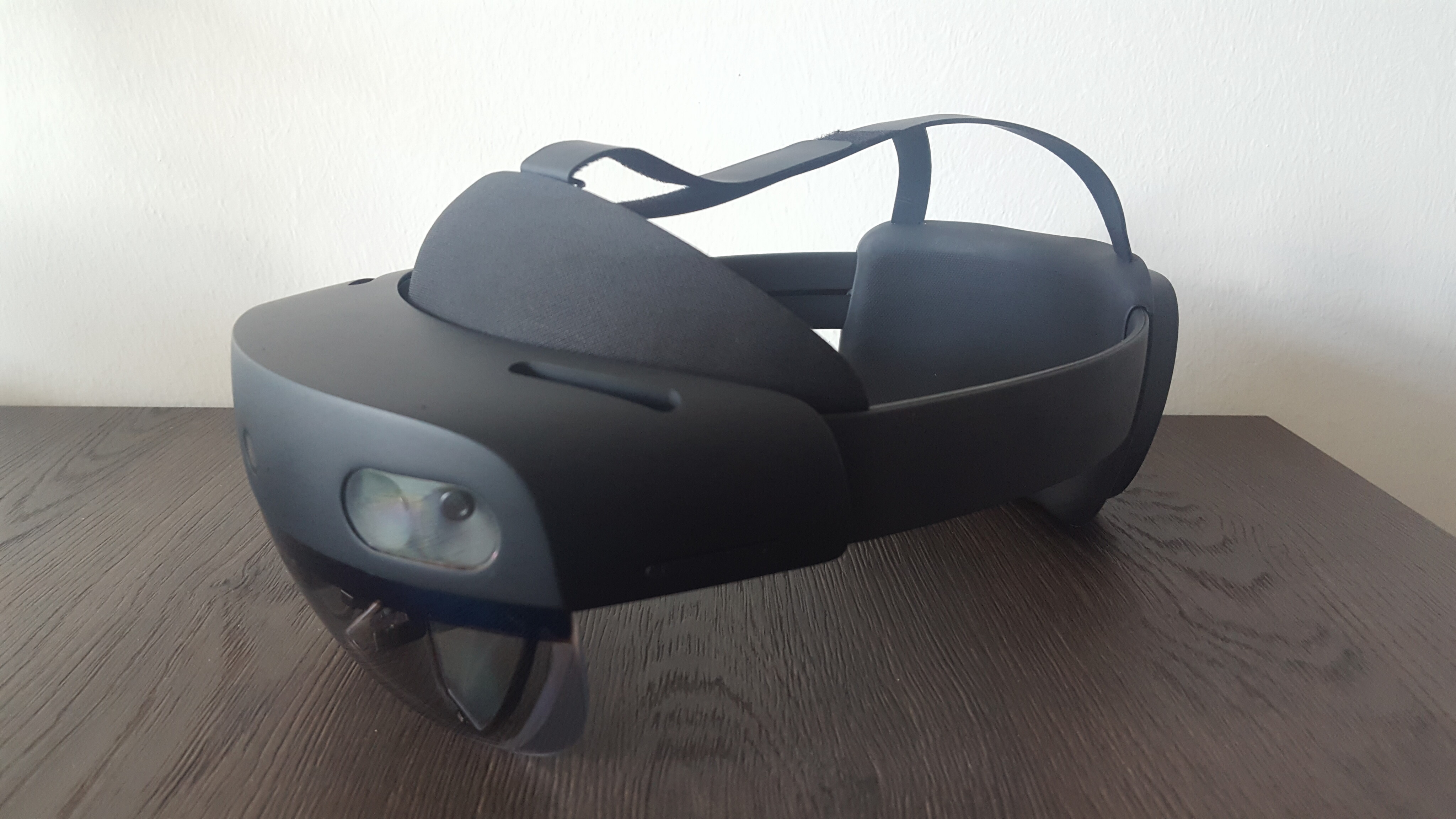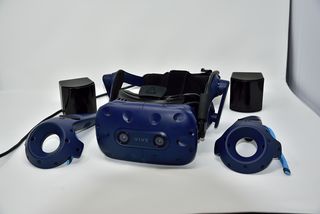Virtual Reality Laboratory
The virtual reality lab at KTmfk
The KTmfk is equipped with virtual reality (VR) and augmented reality (AR) technology. In addition to a Powerwall, the laboratory has VR goggles, AR goggles, depth cameras and various tracking sensors. This equipment is complemented by powerful computers, which are required for the smooth operation of the technologies.
For example, the development of test benches is supported by regular design reviews on the Powerwall. Solutions to any problems can be developed and discussed together.
The laboratory can be rented by interested industrial parties, e.g. for carrying out design reviews, for ergonomics studies or for analyzing simulation results.
Powerwall 3Dims

The KTmfk is equipped with a passive stereoscopic powerwall system from 3Dims. To create the stereoscopic display, images from two projectors with linear polarization filters are projected via a mirror onto a 3.40 m x 2.12 m rear projection screen. The visual output is calculated in a computer cluster consisting of a control computer and two graphics computers. An optical tracking system from Advanced Realtime Tracking is used to precisely track the movements of the users and the input devices in the room. By using four cameras, users can move freely and use the entire available space in the VR lab.
AR-HMD Microsoft HoloLens 2

An augmented reality headset is also available, which can be used to add holographic content to reality. Compared to its predecessor, the glasses offer improved resolution and a larger field of vision. The HoloLens 2 has advanced sensors, including time-of-flight cameras that enable precise hand tracking and an eye-tracking system that records the user’s eye movements. These enable natural interaction with the generated spatial representations. At the KTmfk, the glasses are being used to research an AR CAD workstation. The researchers are investigating how the technology can bring improvements directly to the design process and how intuitively and efficiently interaction with virtual models can be designed.
VR-HMDs

The KTmfk has several virtual reality headsets for flexible virtual and immersive visualization. These generate a separate image for each eye for stereoscopic display, which leads to spatial perception via special lenses. HTC Vive Pro, HTC Vive and Oculus Rift are available. These headsets offer high-resolution graphics and an immersive experience that is further enhanced by the spatial audio output. The controllers that come with the devices enable interaction with the virtual worlds by capturing precise movements and actions in virtual space. In addition, hand-tracking sensors such as Leapmotion can be attached to the VR goggles to expand the input options. This combination of devices is being used at the KTmfk to investigate the natural modeling of preliminary designs in VR. This enables product developers to visualize and adapt their concepts in a fully immersive environment before physical prototypes are created.
Eye-Tracking Sensor PupilLabs
![]() The Pupil-Labs eye-tracking add-on for the HTC Vive Pro enables precise eye tracking in the head-mounted display. This allows users’ interactions with a product to be tracked or the visual display to be specifically influenced.
The Pupil-Labs eye-tracking add-on for the HTC Vive Pro enables precise eye tracking in the head-mounted display. This allows users’ interactions with a product to be tracked or the visual display to be specifically influenced.
The tracker offers an accuracy of ~1°. It is also possible to read out and save the raw video for downstream use.